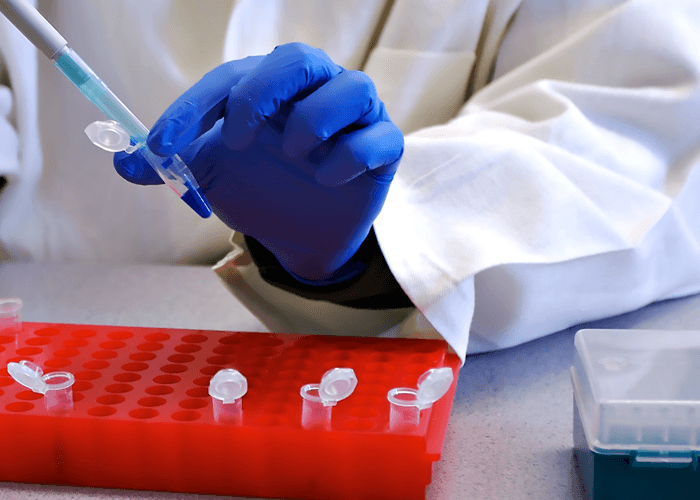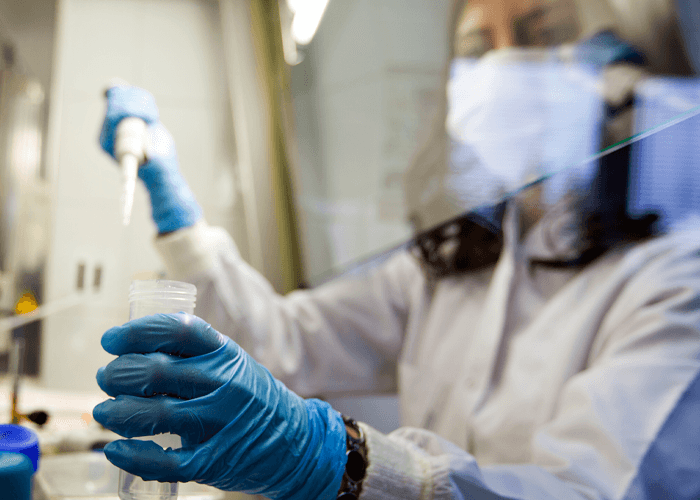Our Testing & Protocols
Not all products have each process or method that applies. Refer to product specifications to determine if one of these protocols apply to your product..
-
Compliance
Conformity to our audited procedures and protocols.
-
Physical Testing
Dimentional and functional testing on actual instrumentation.
-
Biological Testing
Lab based testing using biological testing tools and procedures.
-
Conformity & Regulations
Audited conformity to external assessment and regulatory agencies like FDA, CE and ISO.
60years
We have been making laboratory products for more than 60 years.


Registrations & Certifications
See our regulatory approvals, registrations, and certifications.
CLICK HEREOur Testing
The processes and procedures used to test our products for biological or chemical contamination. For cytotoxic characteristics. And for performance in specific processes.
Biological Testing
Endotoxin Testing uses the Limulus Amebocyte Lystate (LAL) coagulation assay to confirm the absence of neurotoxic, pyrogenic membrane lipids produced by bacterial species. This test, using an FDA suggested standard of 0.05 Endotoxin Units (EU) as a maximum value, confirms that products are free of bacterial contamination.
The sterilization procedure for Labcon products is validated through quarterly bioburden and sterility testing and conforms to the ISO 11137 standard (CFR21 regulation). These tests confirm that the radiation dose is sufficient for a Sterility Assurance Level (SAL) of 10-6. (US.FDA certified Sterile)
Nuclease testing confirms the absence of RNase and DNase enzymes through the lack of degradation of ribosomal RNA and DNA in an aqueous solution that has been incubated in Labcon products. DNA and RNA are examined by agarose gel electrophoresis to confirm molecular integrity.
DNA testing uses the Polymerase Chain Reaction (PCR) to confirm the absence of human DNA using DNA primers that will amplify Alu human DNA elements. PCR results are examined by gel electrophoresis to confirm the lack of amplified human DNA product.
Adenosine triphosphate (ATP) is the universal molecule of energy storage that is used and produced by all living things. ATP testing of manufacturing processes and products can identify potential bacterial, fungal and human sources of contamination, and ensures that all certified products are free of biological contamination. An extensive survey of products is used to confirm that that certified ATP-free products are free of contamination.
Three test articles of the same lot were filled with 2mL KSOM, equilibrated for 72 hours at 4°C, and pooled. Using 500µL of the pooled samples, sperm were cultured for 24 hours, then examined for motility. An SMI value of ≥0.75 is the minimum acceptance value to confirm no detectable sperm toxicity. These experiments revealed an SMI well above 0.75. In accordance with the SMA certification this product passes for toxicity.
Three test articles of the same lot were filled with 2mL KSOM, equilibrated for 72 hours at 4°C, and pooled. 50 single cell mouse embryos were collected (B6D2F1 x B6C3F1) and evenly split between samples for the test article and control. Embryos were placed in an incubator at 37°C with 5% CO2 for 2 hours. Using the pooled samples, embryos received three 500&3181;L washes and a 30µL culture in an incubator at 37°C with 5% CO2 for 96 hours. In-vitro blastocyst development across all samples revealed >95% with >50% cavity. In accordance with the MEA certification this product passes for both toxicity and functionality.
Product samples are exposed to protease-free water and the resulting extraction fluid is tested for the presence of protease activity by examining test protein degradation in the extraction fluid compared to a negative control and positive control reactions supplemented with 2 nanograms of Proteinase K or Trypsin. Extraction fluid samples must show no test protein degradation relative to the negative control for the product to be certified as protease-free.
Material and Substance Testing
Heavy metal content in products is testing using a colorimetric assay that examines extractables from plastic resin. All resins used for Labcon products are qualified by this test to fall below one part per million (1ppm) for all heavy metals.
Ultra low metal products offered by Labcon are qualified to have less than one part per billion (1ppb) of the applicable elements using Inductively Coupled Plasma (ICP) testing.
Performance & Physical Testing
Labcon products that are listed as autoclavable have been repeatedly tested for autoclavablity using a test cycle in a steam autoclave. The test is at 121°C for 20 mins at 15PSI or 1 bar pressure.
Products are pressure and temperature tested to confirm that they are suitable for use as mailing tubes. This work was performed by a third party laboratory. Tubes were filled with a glycerol-water mix and incubated at 25°C in a vacuum chamber at -95kPa for 30 minutes, with no leakage of liquid content observed. Tubes were then incubated at -40°C for two hours at the -95kPA differential, again with no leaking of liquid contents observed. The tubes were then incubated at +55°C for two hours at the -95kPA differential, again with no leaking observed.
Products are pressure and temperature tested to confirm that they are suitable for use as mailing tubes. This work was performed by a third party laboratory. Tubes were filled with a glycerol-water mix and incubated at 25°C in a vacuum chamber at -95kPa for 30 minutes, with no leakage of liquid content observed. Tubes were then incubated at -40°C for two hours at the -95kPA differential, again with no leaking of liquid contents observed. The tubes were then incubated at +55°C for two hours at the -95kPA differential, again with no leaking observed.
CO2 intrusion into tubes is measured by a change in solution pH caused by the formation of carbonic acid from gaseous CO2. Liquid sample pH was measured, then pre-frozen samples were air shipped on dry ice and allowed to thaw. The before and after pH measurements indicated that the pH of the sample did not change. Pre-frozen samples were also exposed to a -95kPa pressure differential in a vacuum chamber filled with gaseous carbon dioxide from dry ice in a freezer environment, with similar measurements again indicating no change in pH of the samples upon thawing.
Excised parts from each lot of product are placed in a spectrophotometer and examined for the ability to block transmittance of UVA, UVB and UVC wavelengths from 100-400 nm. Product lots are also tested for the ability to block transmittance of light wavelengths from 400-750 nm used in fluorescence experiments. Product lots are approved when parts demonstrate 100% blockage of all wavelengths tested.
Registrations & Certifications
Our compliance documents for regulatory and system compliance can be accessed at the link to the right.
